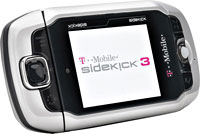 T-Mobile has finally officially announced the T-Mobile Sidekick 3, adding a new trackball controller, Bluetooth and EDGE data to the popular Sidekick 2.
T-Mobile has finally officially announced the T-Mobile Sidekick 3, adding a new trackball controller, Bluetooth and EDGE data to the popular Sidekick 2.
The design’s had a bit of a spruce up in the design factory, with sleeker lines and a narrower 131mm x 59mm x 23mm (5.2″ x 2.3″ x .9″) form factor making the device feel more like a phone.
As with earlier incarnations, the new Sidekick sports a spring-assisted, flip out display with a QWERTY keyboard lurking below.
The keyboard has been significantly improved, and now boasts proper individual keys rather than the rubberised cover seen on earlier versions.
The D-pad controller is now accompanied by a new, ergonomically-improved trackball control which replaces the older up/down roller wheel.
The speed and sensitivity of the trackball can be adjusted to suit personal preferences and (we like this bit) the trackball can glow various colours. Cool!
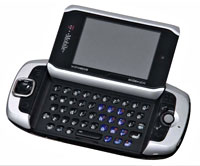 The Sidekick boasts a new 1.3 megapixel camera and assist light, with a large 65k colour, transflective TFT display supporting a rather underwhelming 240×160 pixel resolution.
The Sidekick boasts a new 1.3 megapixel camera and assist light, with a large 65k colour, transflective TFT display supporting a rather underwhelming 240×160 pixel resolution.
Sidekick’s new MP3 player lets users create M3U playlists or play music based on artist, album, genres or composers, with a Mini SD card expansion slot providing storage for up to 2GB of tunes and multimedia stuff.
In line with its all singin’ and dancin’ billing, the Sidekick comes with a 64MB Mini SD card in the box, along with a wired headset and USB cable.
Connectivity
With tri band support (850/900/1800MHz), the GSM Sidekick will suit jet setters flitting between the States and Europe, with a talk time of nearly six hours providing ample scope to keep up with the latest gossip.
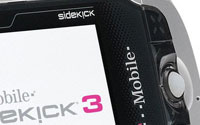 New for version three is a Bluetooth system supporting both the OBEX Push and Headset/Hands Free profiles and a mini-USB port for transferring files from a PC.
New for version three is a Bluetooth system supporting both the OBEX Push and Headset/Hands Free profiles and a mini-USB port for transferring files from a PC.
The built in web browser zips along on sites designed for mobiles (thanks to some nifty server side pre-processing and compression), but things slow down considerably when viewing regular sites, with the low res screen soon showing its limitations.
Sidekick 3 users have the option to synchronise their contacts, notes, calendar entries and email via the T-Mobile website, or they can fork out for a copy of Intellisync to synch their device directly with Microsoft Outlook on a Windows PC.
Messaging
The popularity of Sidekick phones has been assisted in no small measure by their excellent messaging abilities, with text messaging, email, and instant messaging (but still no MMS) supported by a built in spellchecker.
New for version 3 is the support for MSN Messenger and Yahoo! Messenger, supplementing the existing AOL Instant Messenger connectivity.
Compulsive chatters can now enjoy up to 10 simultaneous active IM conversations with T-Mobile’s back-end server ensuring that connections and conversations won’t drop if the signal is momentarily lost.
What we think
Although the rather hefty bulk and teen-friendly looks of the Sidekick may not be everyone’s tastes, there’s no denying that it’s a very capable phone supported by some fun features.
There’s not enough functionality to tempt us from our beloved Treo 650, but for the targeted demographic – teens/fashion victims/schlebs etc – the Sidekick looks sure to prove a hit.
Shame about the poor screen though.
Specs:
Tri-band GSM/GPRS/EDGE
Display 240 x 160 pixel, 65,000 colour display
Trackball
Bluetooth 1.2 (limited to Hands-Free profile and vCard exchange)
1.3 megapixel digital camera w/LED flash
miniSD memory card slot (supports up to 2GB cards)
64MB of SDRAM/64MB Flash memory
Music player software
Size: 130 x 59 x 21.8mm
Weight: 6.7 ounces
 Hot on the heels of Windows Messenger Live comes Yahoo’s new upgrade to their own Instant Messaging service, offering plug-ins to let users share more information.
Hot on the heels of Windows Messenger Live comes Yahoo’s new upgrade to their own Instant Messaging service, offering plug-ins to let users share more information. Widgets and Plug Ins
Widgets and Plug Ins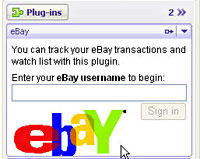 Of course, there’s nothing new to all this embedding malarkey, with the industry boys – Microsoft, Google, AOL and Skype – all falling over themselves to make desktop-based applications shareable over IM services, but Yahoo are hoping that by opening up Messenger to become more of a distribution platform they’ll be able to attract punter-luring new services.
Of course, there’s nothing new to all this embedding malarkey, with the industry boys – Microsoft, Google, AOL and Skype – all falling over themselves to make desktop-based applications shareable over IM services, but Yahoo are hoping that by opening up Messenger to become more of a distribution platform they’ll be able to attract punter-luring new services.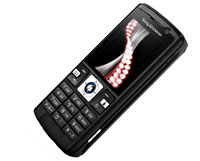 With a full blown parp on their PR trumpets, Sony Ericsson has announced its new Sony Ericsson K610im, their first GSM/UMTS handset to offer full support for i-mode.
With a full blown parp on their PR trumpets, Sony Ericsson has announced its new Sony Ericsson K610im, their first GSM/UMTS handset to offer full support for i-mode.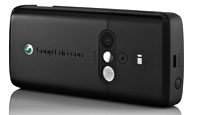 Although the download speed isn’t exactly impressive right now, the next-gen i-mode looks to be a much sleeker beast, supporting white-knuckle speeds up to 384 kbps.
Although the download speed isn’t exactly impressive right now, the next-gen i-mode looks to be a much sleeker beast, supporting white-knuckle speeds up to 384 kbps. Other features include a speakerphone, Bluetooth, USB 2.0, USB charging and a flight mode.
Other features include a speakerphone, Bluetooth, USB 2.0, USB charging and a flight mode. Imaging and messaging
Imaging and messaging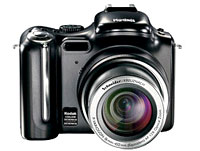 With a flurry of clicking and whirring, Kodak have announced their new Easyshare P712 superzoom digital camera, offering a 12x image-stabilised Lens, a 7.1 MP sensor and enough manual modes to please compulsively tinkersome photographers.
With a flurry of clicking and whirring, Kodak have announced their new Easyshare P712 superzoom digital camera, offering a 12x image-stabilised Lens, a 7.1 MP sensor and enough manual modes to please compulsively tinkersome photographers. We’ve never bothered to work out how fast we blink, but Kodak tell us that their 0.07 seconds capture rate is faster, and who are we to argue?
We’ve never bothered to work out how fast we blink, but Kodak tell us that their 0.07 seconds capture rate is faster, and who are we to argue?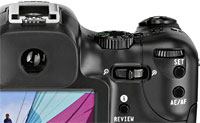 Flashing it about
Flashing it about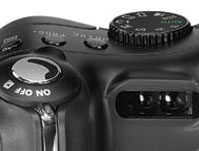 Kodak EasyShare P712 specifications
Kodak EasyShare P712 specifications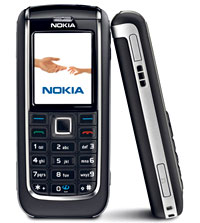 Slipping and slithering down the well oiled product slipway at Nokia is their latest swishy tri-band phone, the Nokia 6080 (no relation to their 1997 phone of the same name!).
Slipping and slithering down the well oiled product slipway at Nokia is their latest swishy tri-band phone, the Nokia 6080 (no relation to their 1997 phone of the same name!).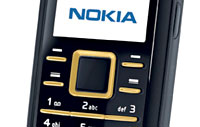 Sporting a backlit keypad and bright colour display, the handset comes bundled with a stereo headset and offers all the usual customisation options (with wallpapers, themes, annoying ring tones etc) to keep da kidz happy.
Sporting a backlit keypad and bright colour display, the handset comes bundled with a stereo headset and offers all the usual customisation options (with wallpapers, themes, annoying ring tones etc) to keep da kidz happy.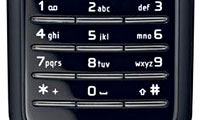 Talk time is a distinctively average 3.5 hours with a standby time of up to 12 days.
Talk time is a distinctively average 3.5 hours with a standby time of up to 12 days. In the wake of the dot com boom, then the dot com collapse, equipment vendors have been feeling the fall-out and mergers seem to be the way to reconcile the collapsing markets. The Nokia-Siemens merger announcement bears witness to this.
In the wake of the dot com boom, then the dot com collapse, equipment vendors have been feeling the fall-out and mergers seem to be the way to reconcile the collapsing markets. The Nokia-Siemens merger announcement bears witness to this.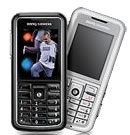 Siemens, a German giant
Siemens, a German giant Companies such as Huawei (“wu why” sometimes pronounced “who are we” which fits their appearance into markets that they had no presence in until recently) are starting to make serious dents into the Tier 1 telecoms/ISP markets.
Companies such as Huawei (“wu why” sometimes pronounced “who are we” which fits their appearance into markets that they had no presence in until recently) are starting to make serious dents into the Tier 1 telecoms/ISP markets.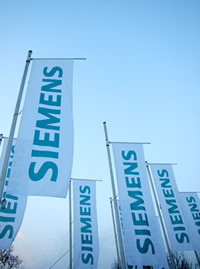 Now they’ve established themselves in the ISP market, the surrounding markets are being worked on (and since most ISPs are now owned by telecoms companies, it’s the telecoms markets that are easiest to move into).
Now they’ve established themselves in the ISP market, the surrounding markets are being worked on (and since most ISPs are now owned by telecoms companies, it’s the telecoms markets that are easiest to move into).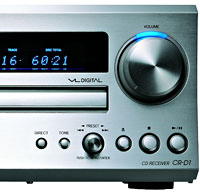 New from Onkyo is the CR-D1, a natty mini Hi-Fi CD/FM receiver with options to control docked iPods (volume/stop/start etc) and wirelessly stream music from PCs.
New from Onkyo is the CR-D1, a natty mini Hi-Fi CD/FM receiver with options to control docked iPods (volume/stop/start etc) and wirelessly stream music from PCs.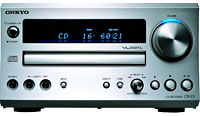 When it comes to expansion options, this fella’s well stacked, offering 1 x optical, 3 x RCA, and stereo mini-jack inputs and 1 x optical, 2 x RCA, subwoofer, and headphone outputs.
When it comes to expansion options, this fella’s well stacked, offering 1 x optical, 3 x RCA, and stereo mini-jack inputs and 1 x optical, 2 x RCA, subwoofer, and headphone outputs.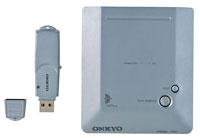 Specifications
Specifications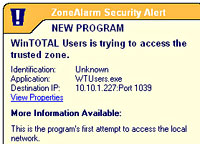 After happily using Zonelabs’ freebie Zonealarm firewall product for years on end, we were keen to try out their commercial Zonealarm Internet Security Suite 6, which bolts on a ton of extras to tempt skinflints.
After happily using Zonelabs’ freebie Zonealarm firewall product for years on end, we were keen to try out their commercial Zonealarm Internet Security Suite 6, which bolts on a ton of extras to tempt skinflints.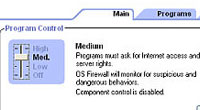 Zone Alarm’s anti-phishing widget has also been enhanced, and the privacy protection feature lets users specify what personal information they want protected, e.g. phone numbers, addresses, bank accounts etc.
Zone Alarm’s anti-phishing widget has also been enhanced, and the privacy protection feature lets users specify what personal information they want protected, e.g. phone numbers, addresses, bank accounts etc.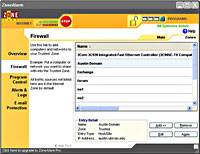 Fine tuning and advanced options were also available, but for many users the default settings should be enough to get them up and running within minutes.
Fine tuning and advanced options were also available, but for many users the default settings should be enough to get them up and running within minutes.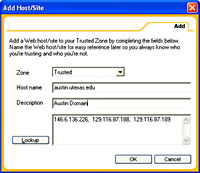 Although there’s not a great deal new on offer here – save the anti-spyware feature – the Internet Security Suite is a solid product that gives you all the protection you need for a reasonable fifty quid.
Although there’s not a great deal new on offer here – save the anti-spyware feature – the Internet Security Suite is a solid product that gives you all the protection you need for a reasonable fifty quid.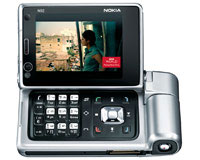 Nokia has announced a partnership with TeliaSonera Sweden to trial a complete DVB-H system, using Nokia’s Nordic know-how, their Mobile Broadcast System 3.0 and Nokia N92 mobile TV devices.
Nokia has announced a partnership with TeliaSonera Sweden to trial a complete DVB-H system, using Nokia’s Nordic know-how, their Mobile Broadcast System 3.0 and Nokia N92 mobile TV devices.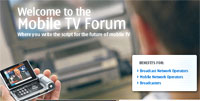 “Nokia is very pleased to be working so closely with TeliaSonera Sweden in this new area of DVB-H based mobile TV. We believe strongly in the capability of this technology as well as in the mobile TV service, and we are looking forward to verify the full potential of mobile TV together with TeliaSonera Sweden,” purred Jan Lindgren, Vice President, Networks, Nokia.
“Nokia is very pleased to be working so closely with TeliaSonera Sweden in this new area of DVB-H based mobile TV. We believe strongly in the capability of this technology as well as in the mobile TV service, and we are looking forward to verify the full potential of mobile TV together with TeliaSonera Sweden,” purred Jan Lindgren, Vice President, Networks, Nokia.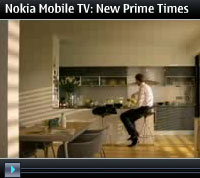 About the technology
About the technology LG Electronics has rolled up its beefy sleeves, raised its fists and shouted, “Come oooonnn!!!! Let’s be ‘aving you!” to the electronics world, declaring its intent to more than double its share of the world’s top products by 2010.
LG Electronics has rolled up its beefy sleeves, raised its fists and shouted, “Come oooonnn!!!! Let’s be ‘aving you!” to the electronics world, declaring its intent to more than double its share of the world’s top products by 2010.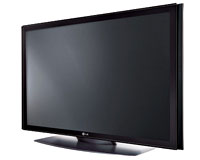 With a direct hit on the spittoon, he continued, “By substantially increasing the number of flagship goods through our technological prowess, we aim to evolve into a bona fide powerhouse.’
With a direct hit on the spittoon, he continued, “By substantially increasing the number of flagship goods through our technological prowess, we aim to evolve into a bona fide powerhouse.’ Pointing aggressively, Myung-wo says he wants the global market for plasma display panel (PDP) modules, PDP TVs, liquid crystal display (LCD) TVs, side-by-side refrigerators, built-in air conditioners and drum washers to be pwned by LG.
Pointing aggressively, Myung-wo says he wants the global market for plasma display panel (PDP) modules, PDP TVs, liquid crystal display (LCD) TVs, side-by-side refrigerators, built-in air conditioners and drum washers to be pwned by LG. Similarly, when it comes to domestic air conditioners, LG rules the roost, and the company is now wrestling for the crown of King of Flat-Panel Displays, knocking out 730,000 plasma units last year to nudge past market leaders Samsung SDI.
Similarly, when it comes to domestic air conditioners, LG rules the roost, and the company is now wrestling for the crown of King of Flat-Panel Displays, knocking out 730,000 plasma units last year to nudge past market leaders Samsung SDI.